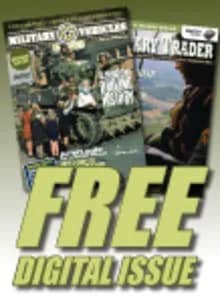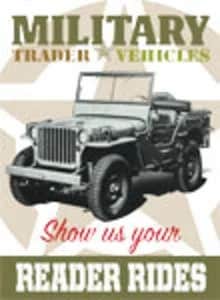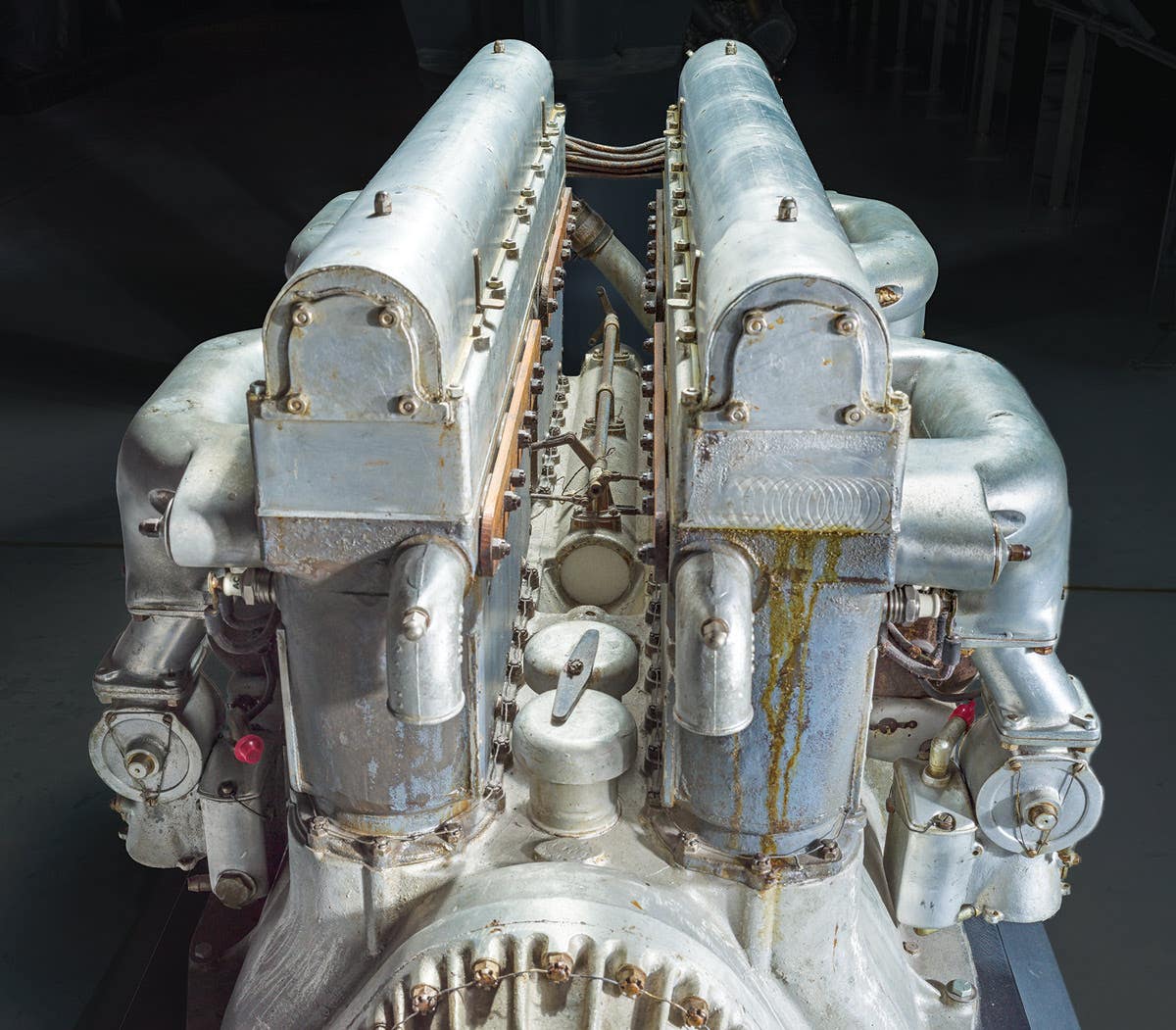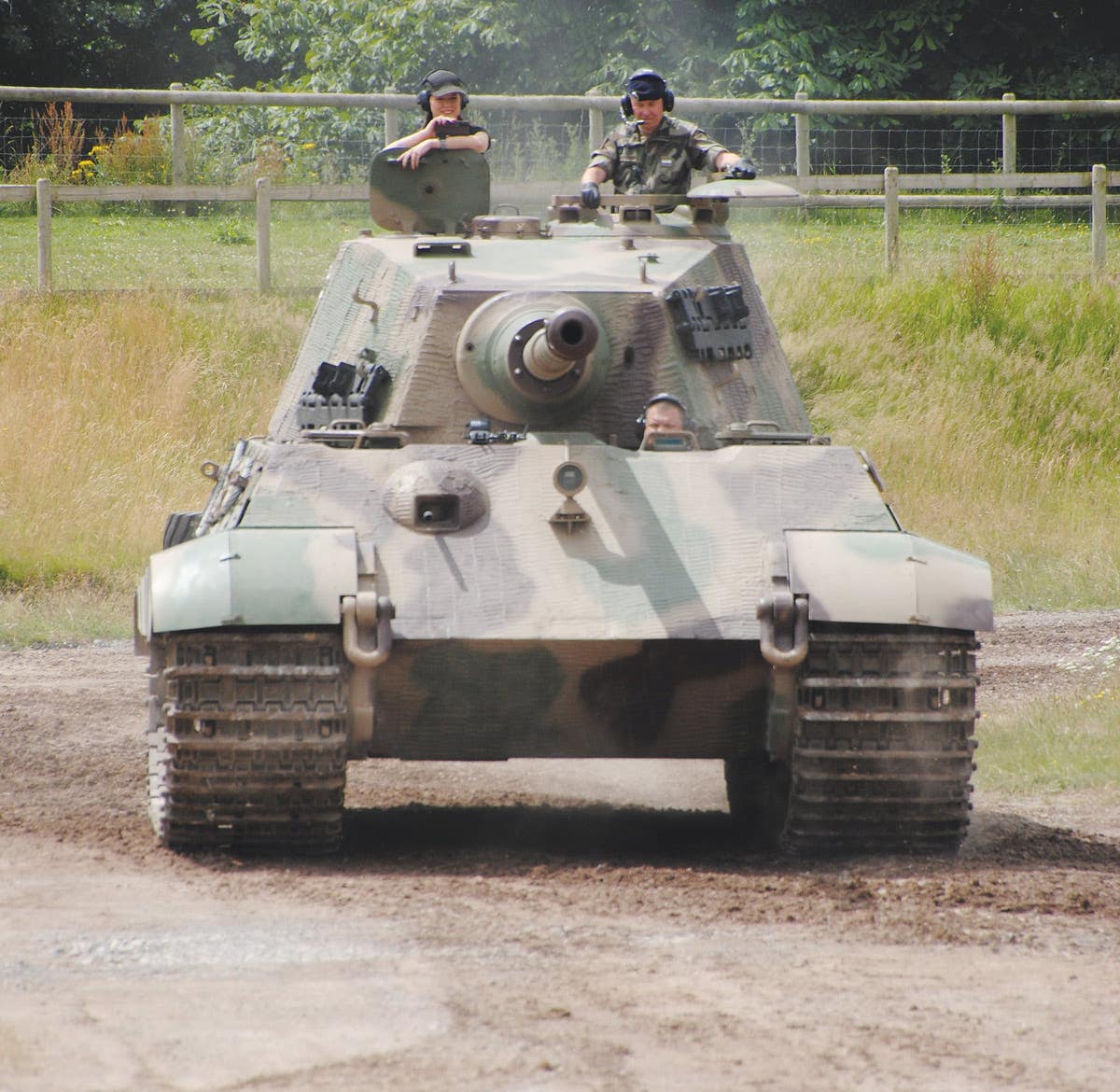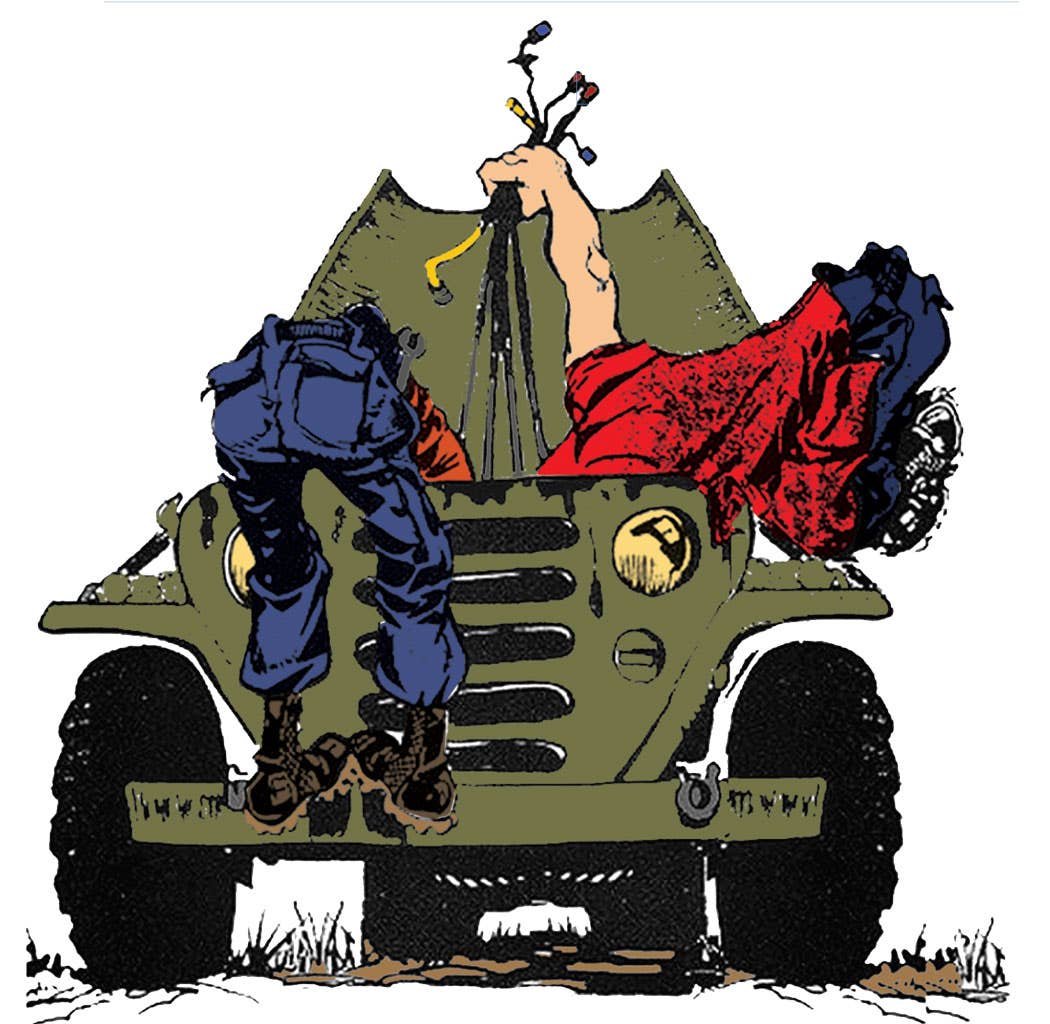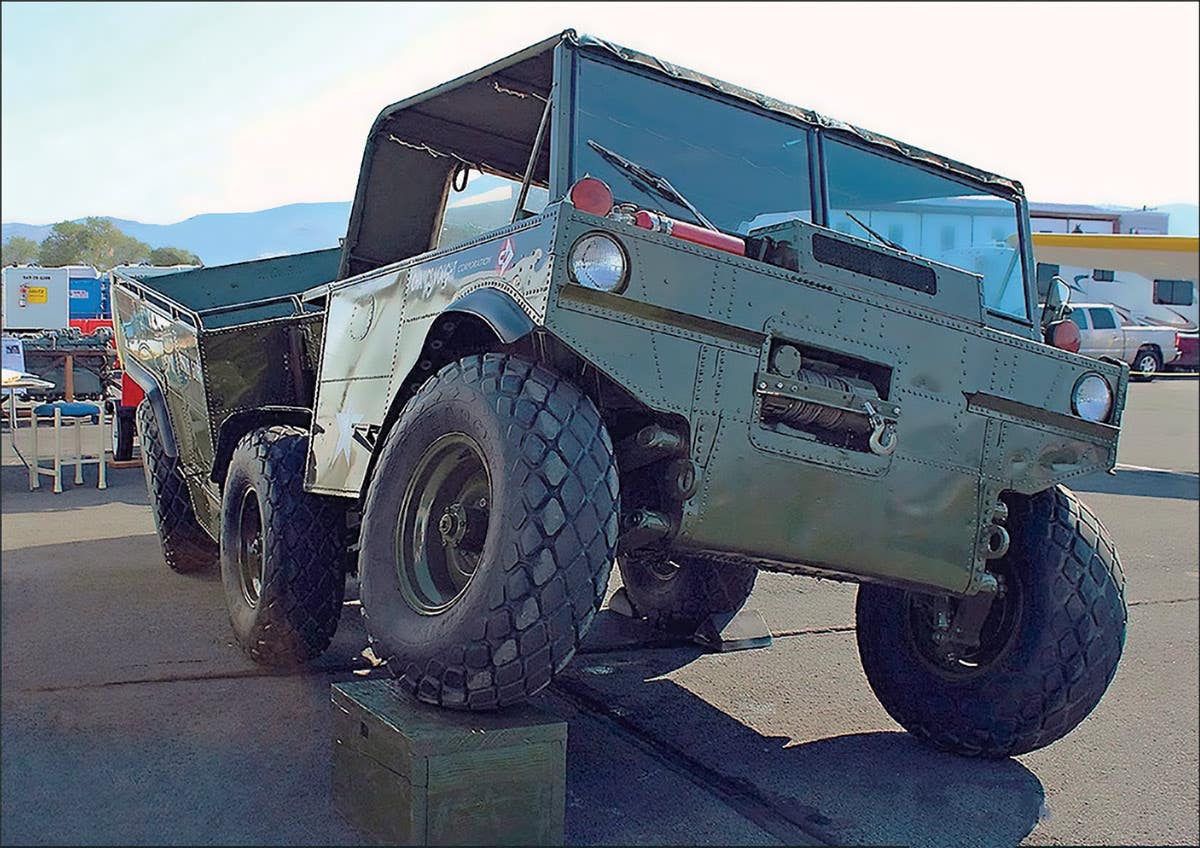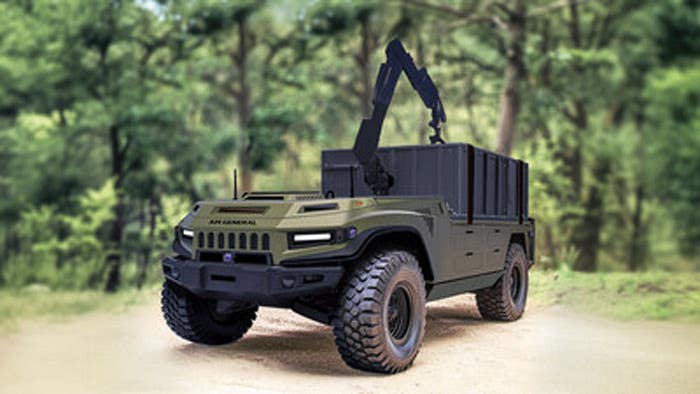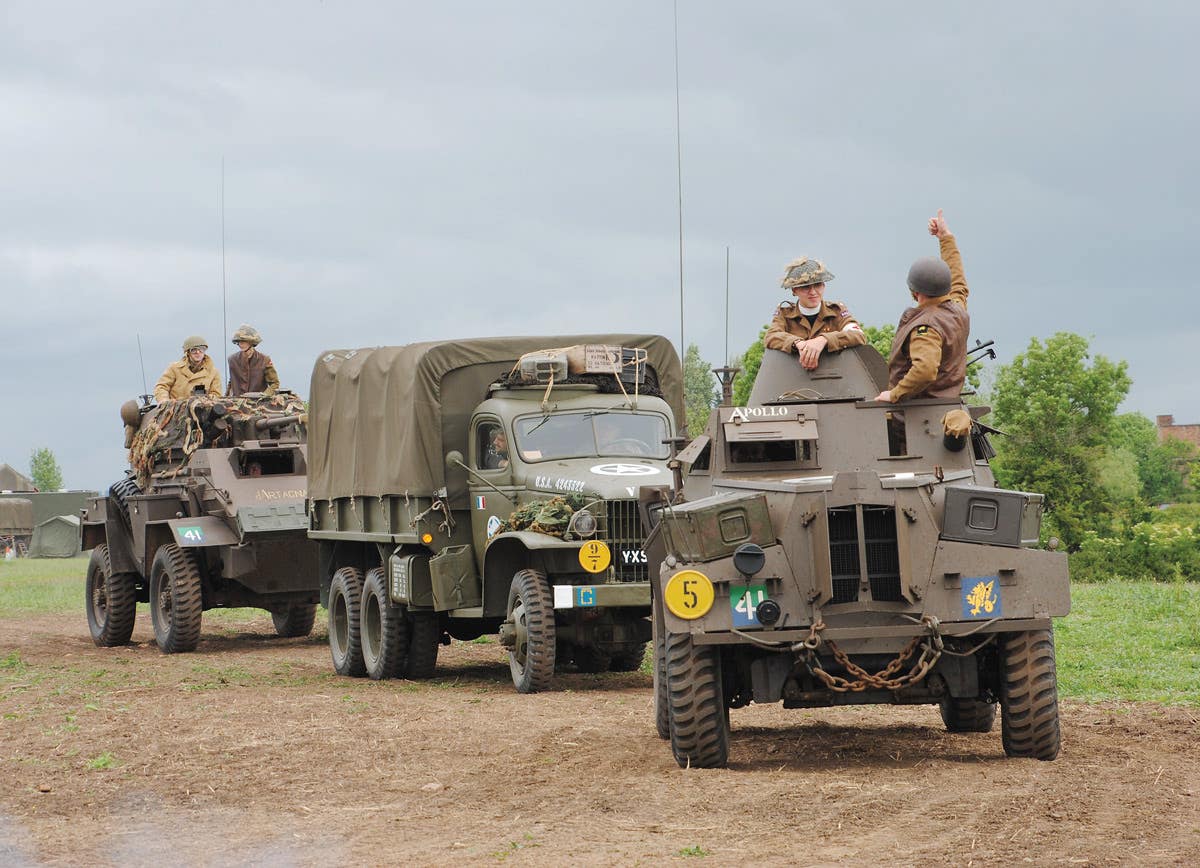A Look at the Fabulous Four-Tons of WWII
Military Vehicles Magazine takes a look a the short-wheelbase Diamond T cargo trucks of WWII
The four-ton Diamond T trucks were originally developed at the behest of the Quartermaster Corps, with the basic form of the short wheelbase cargo to serve as a prime mover for the 155mm howitzer, with a secondary role as a general purpose vehicle for the Corps of Engineers. However, due to the success of these trucks, it was soon adapted to other roles as well.
The four-ton was part of a vehicle program tracing its origins to 1 June 1939 recommendation to the Chief of Staff by the Quartermaster Corps Technical Committee that the army adopt five weight classes of trucks: 1/2-ton, 1 1/2-ton, 2 1/2-ton, 4-ton, and 7 1/2-ton. Further, all tactical vehicles were to be all-wheel drive. Additionally, Quartermaster General Louis H. Bash, long an advocate of standardization, recommended that trucks be purchased in large lots, rather than small contracts, and that the maximum interchangeability of parts be a goal. These recommendations were approved by acting Chief of Staff George C. Marshall.
Invitation for bids for the truck that was to become the four-ton Diamond T were issued on 8 July 1940, and were opened on 25 July. The bid package stipulated that a pilot model would be required after award.
Chicago’s Diamond T Motor Car Company was the winner of the 4-ton bidding. Mack won the 7 ½-ton, GMC the 2 ½-ton, Chevrolet the 1 ½-ton and Dodge the ½-ton.
The resultant four-ton cargo truck, the Diamond T Model 967, featured an enclosed hardtop cab. While the hood and fenders were strictly military, the cab itself was based on Diamond T’s commercial truck cabs. The Model 967 was powered by a Hercules RXB 501 cubic inch straight 6-cylinder engine coupled to a five-speed transmission and two-speed transfer case allowed an on highway towed lowed rating of 12 and one half tons.
The 967 is easily distinguished from later models by its one-piece brush guard, which extends to protect the headlamp. Later models have a narrower brush guard, with separate guards for the headlights.
From the mid-1920s until well into the Cold War era, US Army weapons and material were cataloged through a system known as the Standard Nomenclature List (SNL). Within the SNL were various groupings – Group A was automatic weapons, small mortars, carts and light artillery. Group D was heavy field artillery, and most important for the purpose of this book, Group G was tank and automotive material. A numeric suffix was added to the SNL group to define various families of vehicles.
As a rule, the various series of vehicles within each family or numeric suffix have similar power trains and chassis, but the bodies vary – sometimes widely. However, as with so many ‘rules’, there are a few exceptions to this.
The SNL G system, though not widely used by troops or enthusiasts, is actually much clearer than the more familiar M-number system. In that system, a M1 could be a helmet, a carbine, a rifle, a tank – or a myriad of other things.
To the handsome 4-ton Diamond T 6x6 cargo trucks of WWII, the Standard Nomenclature List number assigned was G-509. The G-509 was produced in several models. The “short”(151-inches) wheelbase cargo truck that is the focus of this article, as well as a wrecker of the same wheelbase, were joined by dump truck on the same wheelbase, and a ponton (bridge float) – (note to Stormy – ‘ponton’ is correct, it is NOT pontoon) truck with a 172-inch wheelbase chassis.
Diamond T assigned the following model numbers to these trucks:
- SWB Cargo 967, 968, 968A and 968B
- Wrecker 969, 969A and 969B
- Dump 972
- Ponton 970 and 970A
Quartermaster contract W-398-qm-8270, called for 977 of the Model 967 trucks, with a further 21 trucks to be built as wreckers. The first 50 were delivered in November 1940; 316 in December 1940, and the balance of 611 being delivered in January-March 1941.
The registration numbers for these trucks spanned 417678 through 418653, plus 462751. Twenty-one of these trucks, listed in the “Summary of Acceptances Tank-Automotive Material” as cargo trucks, are however listed in Ordnance Department Administrative and Tactical Vehicles 1940-1945 as wreckers, with registration numbers of 001310 through 001330. Adding to this confusion, the Recapitulation of Facility Expansions for Tracked & Wheeled Vehicles from 1940 to July 15 1945, lists no wreckers being delivered until May 1941.
The Model 968, introduced in April 1941, was upgraded to the larger, more powerful Hercules RXC-529 engine. Production of the Model 968 totaled 1380 and was divided between contract W-398-qm-8926 for 1234 units, awarded in December 1940, and contract W-398-qm-9568, awarded in January 1941, for 146 additional trucks. All of these were delivered by the end of October 1941.
Like their predecessors, these trucks all featured enclosed cabs and steel cargo bodies.
The Model 968 was replaced by the Model 968A, which featured the military type instruments instead of the civilian style used previously. The cab, however, remained enclosed. There were 677 of the Model 968A trucks delivered on contracts completed by December 12, 1941, with 828 on order as of that date.
On 13 July 1942 the War Department amended the Iron and Steel Limitation Order. The new requirement provided that 60 days after the governing date of 15 July the use of iron or steel would be prohibited for truck and trailer bodies on orders for Army, Navy, and Maritime Commission, except tank and dump bodies, as well as essential hardware, structural and bracing members for bodies essentially of wooden construction. Thus, the previously used part number B12460 steel cargo body was replaced by the DT-N27636 wooden cargo body. The wooden body was manufactured in accordance with wood cargo body spec HQMB ES No. 755, issued 23 May 1942. The wood cargo body began to be used on contracts W-271-ORD-2549 and W-271-ORD-4577.
While the move to wooden cargo beds was strictly an effort to reduce steel consumption, the other major change in appearance to the Diamond T, the introduction of the military standard open cab, was motivated for a different reason. This was an effort to reduce the shipping space of the trucks, reflecting the extreme limits to which ocean shipping capacity was being stretched. By mid-1942 the decision had been made to replace the enclosed hard-top cab with an open cab with collapsible canvas top.
A 29 December 1942 memorandum senet to Col. E. S. Van Deusen, noted “Diamond T claimed that they had experienced difficulty in developing dies for the open cab and are not sure that they can be building open cabs for vehicle production by April 15th. The Chicago Ordnance District is being requested to investigate this matter and advise the action to be taken to improve the open cab production date.” Ultimately, the open cab was introduced on the four-ton cargo truck at serial number 968A4390.
The Model 968B was produced for Defense Aid recipients, and differed from the 968A in that it was equipped with only a single headlight which was equipped with a blackout mask, rather than the pair of sealed beam units found on the 968A. The Model 968B also lacked the blackout driving light found on the 968A. Further, the blackout tail and stop lights differed between the two types of trucks.
The first contract for the Model 968B was awarded in May 1941. That contract, DA-W-398-QM-2, was for 180 of the trucks. The first 48 were delivered that same year, with the balance of 132 being delivered the following year.
Per Ordnance Department Administrative and Tactical Vehicles Defense Aid 1940-1945 issued 22 May 1945, that initial order was followed by successive orders as follows:
Contract W-398-qm-11509, which included for Defense Aid 689 trucks.
A further 112 were accepted on contract DA-W-398-QM-244, which was awarded in January 1942. This included a group of 52 trucks assigned US Army registration numbers 4113513 through 4113564, and 15 numbered 4415676 through 4415690
In March 1942 contract DA-398-qm-428 was awarded, which called for 22 further examples, registration numbers 4354060 through 4354081.
Not surprisingly, contracts for the Model 968 and 968A four-ton trucks for use by the US military was somewhat more convoluted. In addition to the previously mentioned contract W-398-qm-8926 and contract W-398-qm-9568, there were the following vehicles accepted:
A total 9,699 trucks accepted. Limitations in the supply of components, which was a common problem for all US wartime manufacturers of tactical trucks, meant that Diamond T struggled to meet production schedules. As an example, in September 1944 Hercules was behind schedule on engine deliveries for the four ton, with only 747 of the engines produced, vs 1,802 engines scheduled. Similarly, Timken had been so strained to deliver axles that American Bantam Car Company had tooled up and began production of axles for the four-ton at about the same time.
As noted, the US military was not the only user of the short wheelbase four-ton Diamond T. Lend-Lease recipients received the following quantities:
- British Empire 694
- Canada 400
- French Forces 265
- China 67
- Brazil 38
- Chile 4
For the US Army, as of 30 April 1945 there were 303 of these trucks in serviceable condition and 576 in unserviceable condition remaining in the Zone of Interior. US Army inventory overseas consisted of 164 trucks in the European and Mediterranean and 154 trucks in the Pacific, including CBI. Scheduled for remanufacture in commercial facilities through June 1946 were 873 of the trucks.
Production of the SWB cargo was scheduled to cease in June 1945 with 88 trucks; SWB chassis stopped in August with 19 units accepted.
While following WWII the four-ton Diamond T soldiered on in the US military in the 1950s, when it was supplanted by the new 5-ton 6x6 trucks, many more were supplied to friendly nations.
*As an Amazon Associate, Military Trader / Military Vehicles earns from qualifying purchases.
David Doyle's earliest published works were occasional articles in enthusiast publications aimed at the historic military vehicle restoration hobby. This was a natural outlet for a guy whose collection includes several Vietnam-era vehicles such as M62, M123A1C, M35A2, M36A2C, M292A2, M756, and an M764.
By 1999, his writing efforts grew to include regular features in leading periodicals devoted to the hobby both domestically and internationally, appearing regularly in US, English and Polish publications.
In 2003, David received his a commission to write his first book, The Standard Catalog of U.S. Military Vehicles. Since then, several outlets have published more than 100 of his works. While most of these concern historic military hardware, including aircraft and warships, his volumes on military vehicles, meticulously researched by David and his wife Denise, remain the genre for which he is most recognized. This recognition earned life-time achievement in June 2015, when he was presented Military Vehicle Preservation Association (MVPA) bestowed on him the coveted Bart Vanderveen Award in recognition of “...the individual who has contributed the most to the historic preservation of military vehicles worldwide.”
In addition to all of publishing efforts, David is the editor of the MVPA’s magazine, History in Motion, as well as serving as the organization’s Publications Director. He also maintains a retail outlet for his books online and at shows around the U.S.
